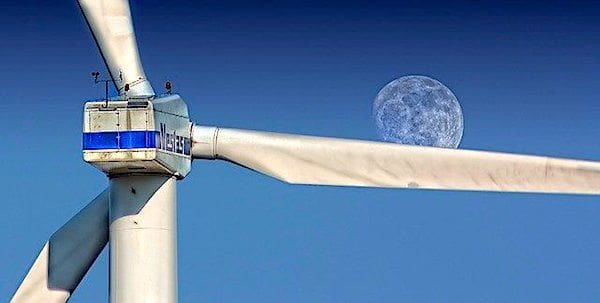
China is the world’s largest generator of wind power and a team of researchers at the heart of the global wind industry has just discovered an inconvenient truth: weather-dependent sources of electricity are a bad bet when the climate is changing.
In an article published this week in the journal Nature Climate Change, the Beijing and Shenzhen-based researchers find that around 20% of the globe’s wind turbines are located in areas that will become increasingly susceptible to “wind droughts” due to changing climactic conditions. As the name implies, wind droughts are sustained periods of uncharacteristically low gusts that render wind turbines useless. Even with aggressive reductions in greenhouse gas emissions, the researchers predict that these acute snaps of atmospheric stillness will become both more frequent and longer in a global geographic belt that stretches north of Houston to just south of Anchorage.
These findings will come as little surprise to utility operators across Western Europe, who are also located within the latitudinal wind lacuna. Germany, which has the largest wind fleet in Europe, was blighted by calm skies in March of this year. Electricity prices soared 48% higher relative to the preceding March and coal and natural gas plants carried the burden in Europe’s largest economy.
Inept during periods of calm, wind power also struggles in wild weather. The goldilocks requirements of wind were notably evident in Texas, which has the largest wind build-out of any state, during Winter Storm Uri of 2021. Though the storm drove down electricity generation across the board, nuclear, natural gas, and coal proved to be the most resilient sources of electricity during the assault on the Lone Star state’s grid.
The oscillation between erratic booms and busts of renewable electricity generation chips away at the wind industry’s key selling point of reduced greenhouse gas emissions. Coal plants may pick up the slack during wind downturns, but they otherwise operate below their designed capacity due to an influx of federally subsidized renewables into the grid. Yet, operating a coal plant below capacity is inefficient and typically results in higher greenhouse gas emissions on a per megawatt hour basis. The federally induced proliferation of wind turbines thus lock the grid into a twist: dispatchable power is a necessary stopgap for increasingly intermittent wind generation, but a surge in wind generation increases the relative emissions of approximately 20% of America’s dispatchable electricity generation, which leads to progressive calls for a build-out of more wind power that will require a stopgap.
The mounting academic and empirical warning signs of wind power’s shortcoming are lost on the global climate lobby, which continues to recycle decades-old talking points. Just last week, the former president of the Socialist International turned United Nations Secretary General Antonio Guterres declared that the future must be powered by renewables, in part, because there are “no embargoes on wind.” Given the exacerbation of conflicts in Ukraine, Gaza, and Sudan during Guterres’ term as Secretary General, it remains to be seen how the Secretary General will negotiate the end of a wind drought with the skies.
For Guterres and his comrades, recent research on wind droughts should provide another data point that illustrates how today’s renewable technology will fail to propel the world’s economy. Neither citizens nor the environment are well served by constructing rhetorical Potemkin villages, where en vogue technologies are lauded and their drawbacks ignored. Realism around the strengths and weaknesses of various energy technologies is the only sustainable path forward.
Oliver McPherson-Smith, PhD served as the inaugural Executive Director of the National Energy Dominance Council in the second Trump Administration.
Click this link for the original source of this article.
Author: RealClearWire
This content is courtesy of, and owned and copyrighted by, https://www.wnd.com and its author. This content is made available by use of the public RSS feed offered by the host site and is used for educational purposes only. If you are the author or represent the host site and would like this content removed now and in the future, please contact USSANews.com using the email address in the Contact page found in the website menu.








